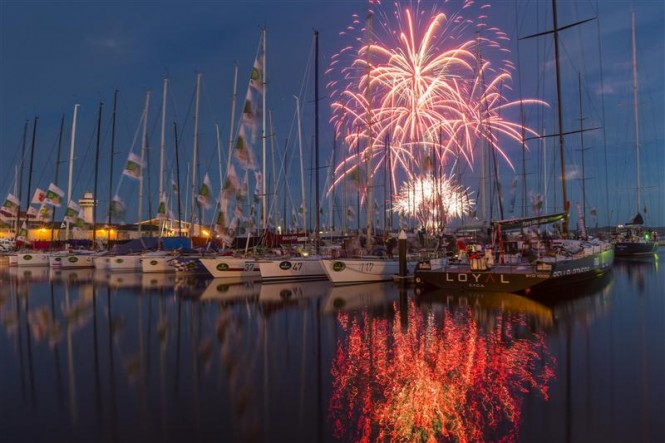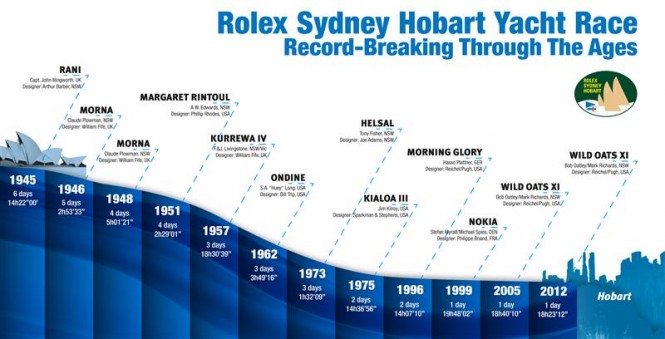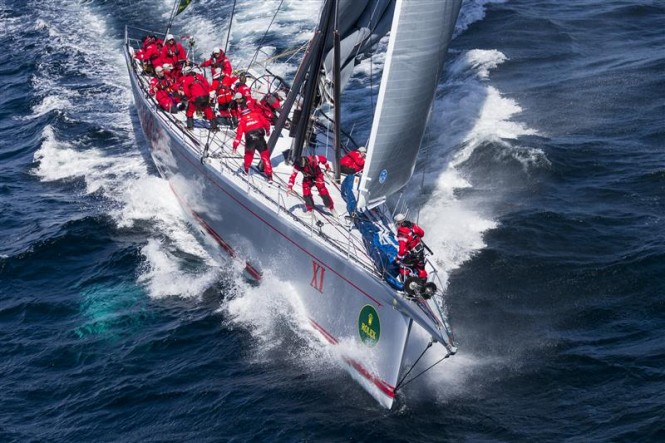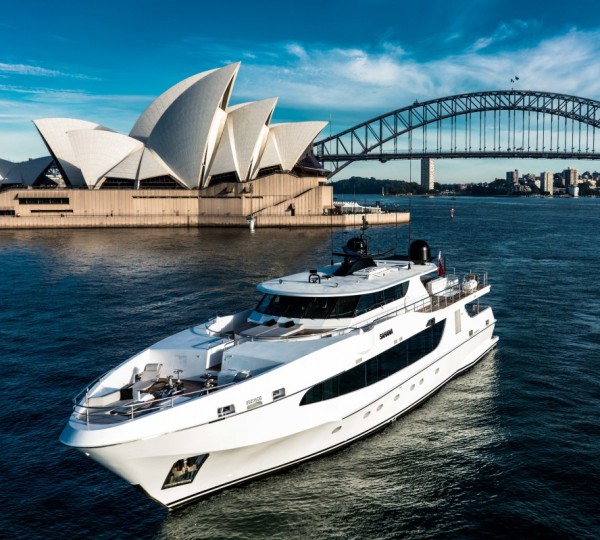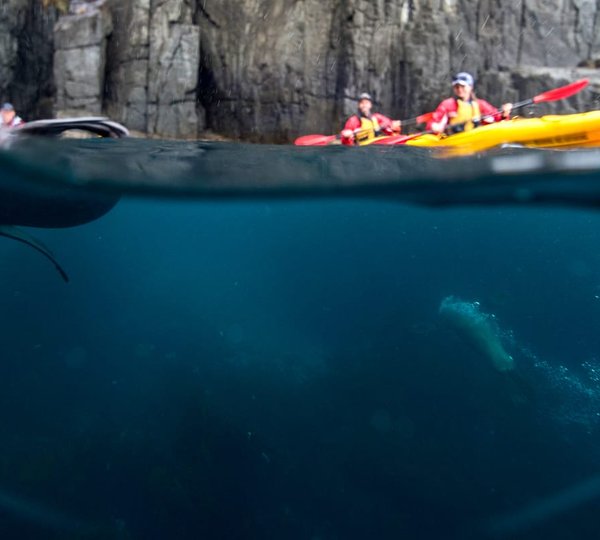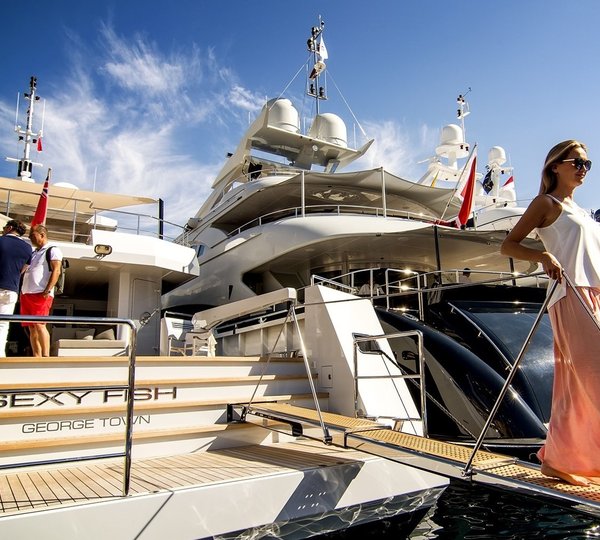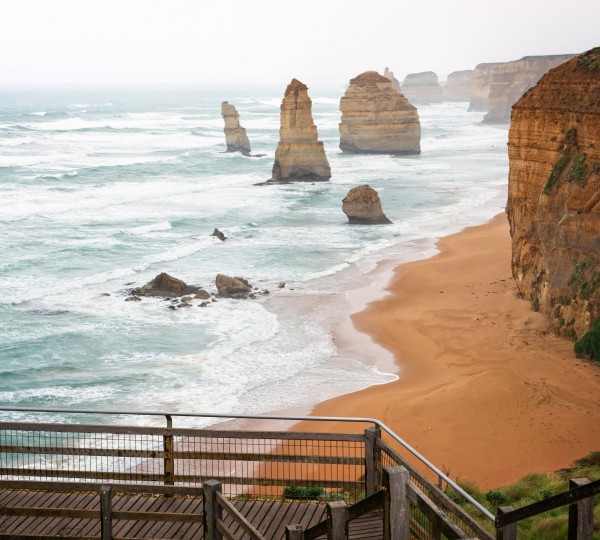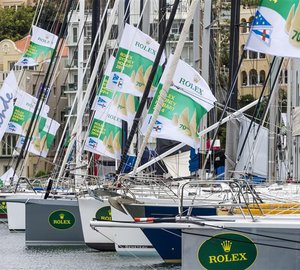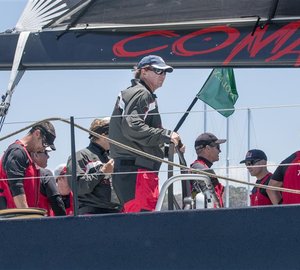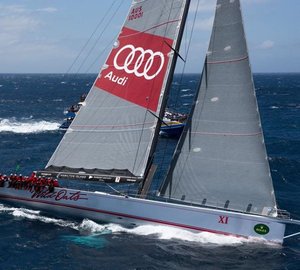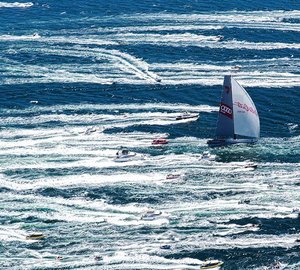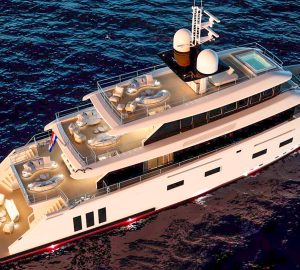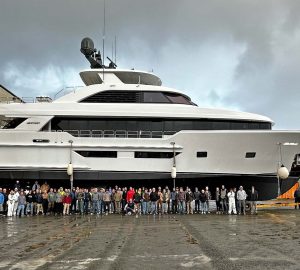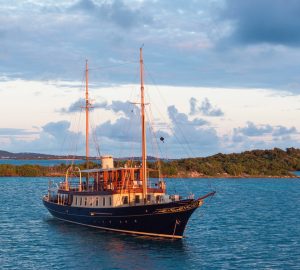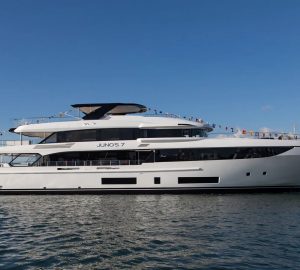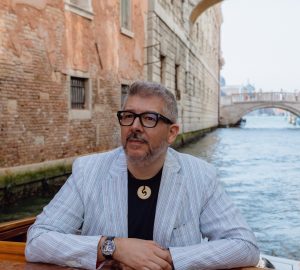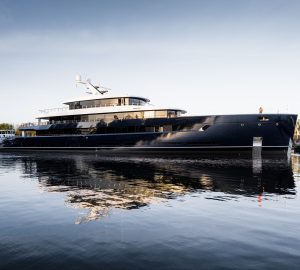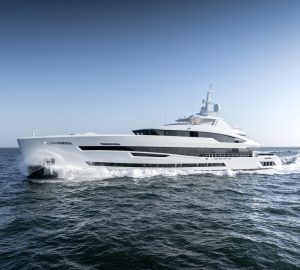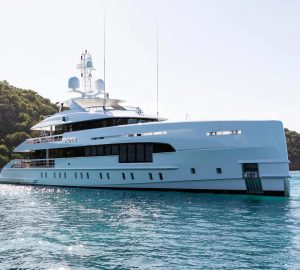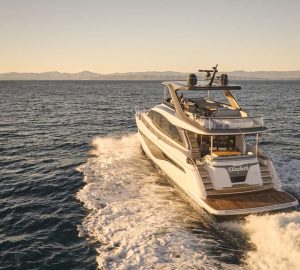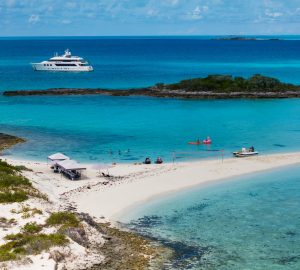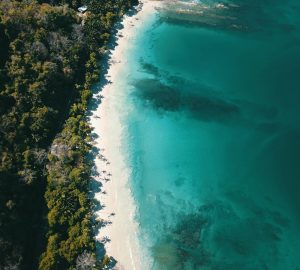This year will be marked by the 70th Anniversary edition of the Rolex Sydney Hobart Yacht Race. This will be a momentous achievement for an offshore race that has become an international classic since its introduction in 1945.
Over the course of its proud history, the Rolex Sydney Hobart has paid homage to feats of bravery, extraordinary seamanship, speed and endeavour; has witnessed adversity and overcome tragedy; and has attracted a diverse cross-section of people to contest this nautical rite of passage. The race has been conquered by both 30-ft Corinthian-crewed boats and imperious, professionally-sailed 100-ft Maxi yachts.
Rolex has sponsored the competition since 2002, an integral part of its triumvirate of 600-nm offshore classics also comprising the United Kingdom’s Rolex Fastnet Race (first run in 1925) and the Rolex Middle Sea Race (dating back to 1968). The values of adventure, courage, determination, discovery and sportsmanship set these offshore races apart from other yacht-racing events, and reflect a rigorous sporting ethos with which Rolex is privileged to be associated.
Make a race of it
The original idea of sailing from Sydney to Hobart, Tasmania, was launched by members of the Cruising Yacht Club of Australia (CYCA) shortly after its creation in 1944. Originally planned as a cruise, history recounts that John Illingworth, a British Navy officer residing in Sydney who had competed in the Fastnet in 1937, only agreed to take part if the other participants would “make a race of it”, which they did. Nine yachts – ranging from 30 to 63-ft – took part in that first race.
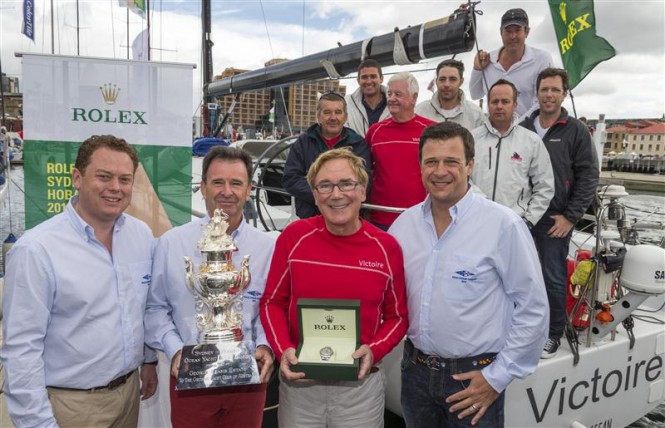
Overall Winner, Darryl Hodgkinson and Victoire crew with Patrick Boutellier, Rolex Australia - Photo by Rolex/Carlo Borlenghi
Compared to the sophisticated, high-tech equipment and information systems available to the crews in 2014, 1945 was a vastly different era: in the post-war years, materials were scarce and rudimentary. Safety measures were minimal by today’s standards, navigation was by sextant and compass, some crews did not possess functioning radios and therefore remained ignorant of weather reports and storm warnings.
When Illingworth’s yacht Rani arrived in Hobart on the evening of 1 January 1946, her crew had no idea of her position in relation to the rest of the fleet. Assuming his boat was last to arrive, Illingworth was astounded to learn that his boat, the second smallest yacht in the fleet, had beaten the competition as fastest finisher. Rani also proved to be the race’s overall winner. As the first recipients of the prestigious Tattersall’s Cup, both Illingworth and Rani have become two of the event’s legendary characters.
Tales from that heroic, almost curious, first race inspired others to take part. It fast became a tradition and has taken place between Christmas and New Year every year since.
Challenging, compelling
Seventy years on, many of the values instilled by the race’s founders are still prominent; the sense of adventure, the Corinthian spirit, the camaraderie, dedication, respect for the elements and the competition. Many of the values prevalent in offshore racing form part of Rolex’s ethos and explain its close association with this component of the sport.
A sense of adventure and a determination to be the best have been integral to the history of Rolex. In 1926, Rolex invented the Rolex Oyster, the world’s first waterproof wristwatch. To prove his invention, Rolex founder Hans Wilsdorf equipped Mercedes Gleitze with an Oyster when she swam the English Channel a year later. The Rolex watch emerged from more than 10 hours in the water in perfect working order. Through their robustness, reliability, precision and functions, Rolex watches are tools of human achievement. They have endured climbing the world’s highest mountain (Everest, 1953) and greatest ocean depth (Challenger Deep, 1960). They offer freedom from many constraints, allowing attention to focus on the main objective and the obstacles to be overcome, all the while aware of the vital notion of time.
Overcoming challenges and pushing boundaries explain part of the Rolex Sydney Hobart’s status as a classic. For most crews, the chances of winning are extremely low. The attraction lies in the many unknowns of racing 628 nautical miles, the exhilaration and the sense of accomplishment at the finish. The race has earned a fearsome reputation, justified by the route touching some of the toughest open waters on the planet. In 1998, a severe storm, similar in strength to a low-class hurricane, led to the sinking of five yachts and the deaths of six sailors in the Bass Strait. The response of the organizers was proactive: new safety measures and regulations were introduced immediately after the disaster.
Briton Mike Broughton, a regular competitor and highly experienced navigator, whose first encounter with offshore racing was the infamous 1979 Fastnet Race, has observed many finishes over the years: “There’s a look in people’s eyes when they get to Hobart; quite often it is bloodshot and tired, but there is an elation at having done the race. It means a great deal, a huge amount.”
Competitors are drawn to the raw nature of testing themselves against the elements. The mix of hard physical challenges is well documented, and for some sailors there is fear to overcome; something Broughton is adept at explaining: “We start in Sydney where it is lovely and sunny, 26 degrees, and we’re going on a yacht race. But, you turn right [south] out of the Heads [the exit from Sydney Harbour, giving onto open sea] and often on the first night you are straight into a southerly bringing much colder winds from Antarctica and the sea state can be pretty brutal. Fear is not something you want to talk about. It is kept in the back of your mind, but it is one of the challenges of this race.”
Drawn to compete
The great names and characters who have competed have helped fuel interest and the legend. Throughout the years the race has attracted politicians, business tycoons, sporting legends and, naturally, the cream of sailing talent. Notable recipients of the Tattersall’s Cup include British statesman Sir Edward Heath with Morning Cloud in 1969, media mogul Ted Turner and American Eagle in 1972 and American sailing stalwart John Kilroy and Kialoa II in 1977.
The first boat to finish the Rolex Sydney Hobart always receives a rapturous welcome in Hobart. Line honours winners have included famous participants like American business giant Larry Ellison with Sayonara in 1995 and 1998, French sailing legend Eric Tabarly and Pen Duick II in 1967, and German entrepreneur Hasso Plattner and Morning Glory in 1996. Over the past decade, the contest has been dominated by Australian wine producer Bob Oatley’s superyacht Wild Oats XI, a 100-ft Maxi which has twice broken the race record and claimed seven line honours titles in the process.
Worldwide attention
In Australia, one of the world’s most sport-conscious nations, the Rolex Sydney Hobart has carved out for itself a permanent place in the calendar of unmissable events. In Sydney itself, the start of the race draws crowds to the harbour during the height of summer and the end-of-year festivities. Its annual start the day after Christmas, the ever-growing folklore, the spectacle: all have an impact and the result is dramatic. “It would not be the same growing up in Australia not watching the Boxing Day Test [cricket match] followed by the start of the Rolex Sydney Hobart, one of the great sailing challenges,” says Phil Waugh, the Australian rugby union star and crew member of the first boat to finish the 2011 Rolex Sydney Hobart.
Hundreds of thousands of people pack the foreshore and Sydney Harbour is congested with big boats, little boats, kayaks, dinghies. Everyone in Sydney who can get on the water does so, the rest watch from shore or join the international television audience. No other sailing event in the world commands such avid attention, bringing a nation to near standstill for an hour.
It is a remarkable fact that start and finish are both regarded as something to witness; something you would tell your friends: ‘I was there’. Few sailing events in the world can truly claim to cross the boundary between niche sport and major attraction. In 2011, when the first two yachts to finish were separated by three minutes, 10,000 spectators were estimated to be on the dock in festive Hobart captivated by the moment.
Human endeavour
“The greatest lesson this race can teach you is humility. It doesn’t matter what background you come from, what wealth you have or don’t have, the sea doesn’t discriminate. It’s the purest thing a human can do: be propelled by the sea and wind to reach a destination,” says Sean Langman who has competed in the race over 20 times.
Non-sailors may find it difficult to understand the intricacies of yacht racing and the handicap system that means the first to finish is not necessarily the winner. What they do comprehend is enterprise, courage and adventure. The element of personal challenge that inhabits this race plays a full part in attracting wider appreciation. “I keep coming back because I love the race: I love the challenge, the preparation, and I love the battle against the ocean and the battle against the other yachts. My grandfather sailed this race, my father sailed this race, it has passed down through generations. I feel like I am part of it – I hope later in my life my son will do it too,” says Peter Merrington, who has finished the Rolex Sydney Hobart over ten times.
It is a challenge which has endured and enticed for 70 years and will continue to do so. Like climbing Everest or diving to the world’s deepest point, the Rolex Sydney Hobart is a true test of human endeavour.
The 2014 Rolex Sydney Hobart commences at 13:00 AEDT on Friday 26 December.

